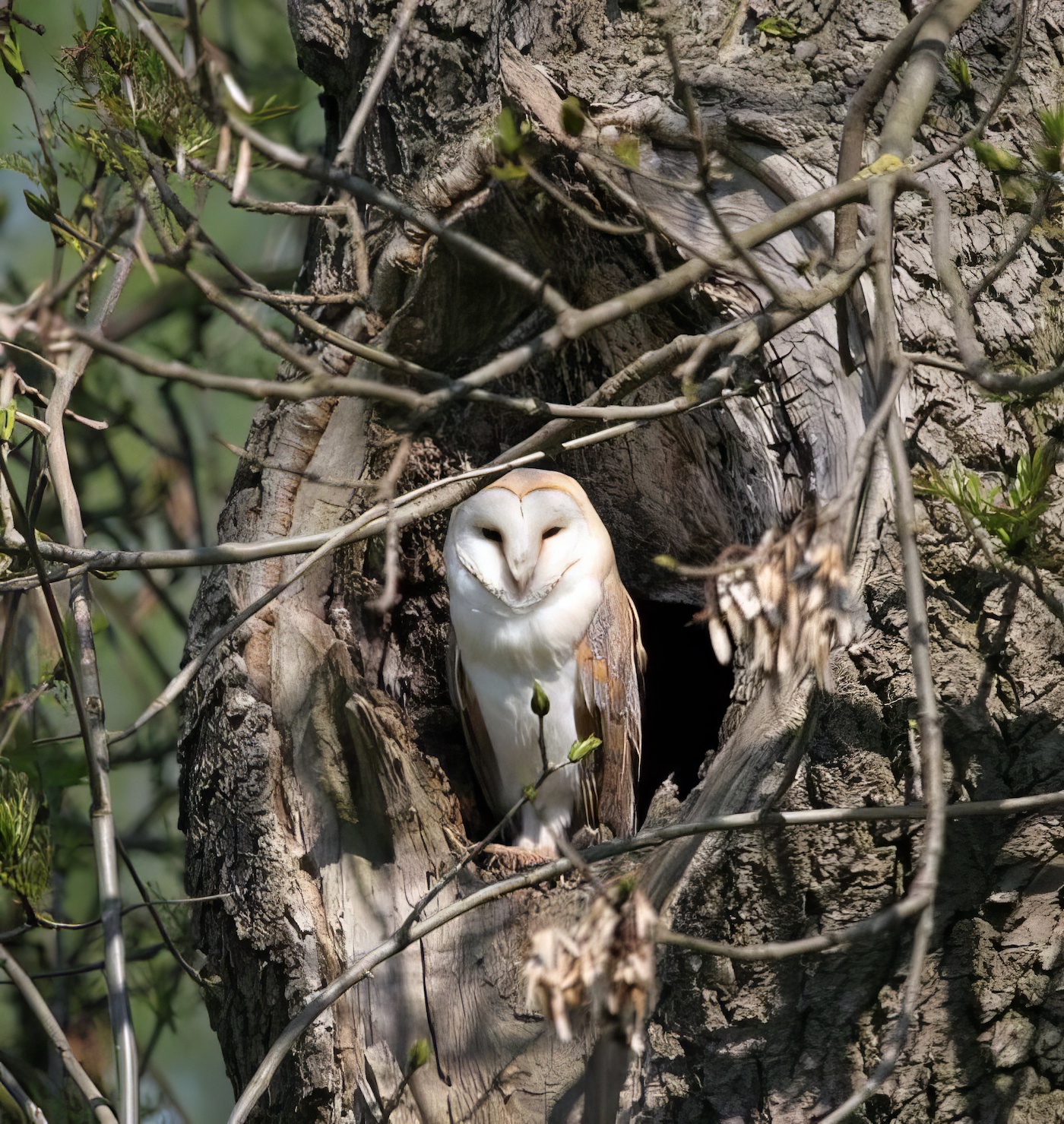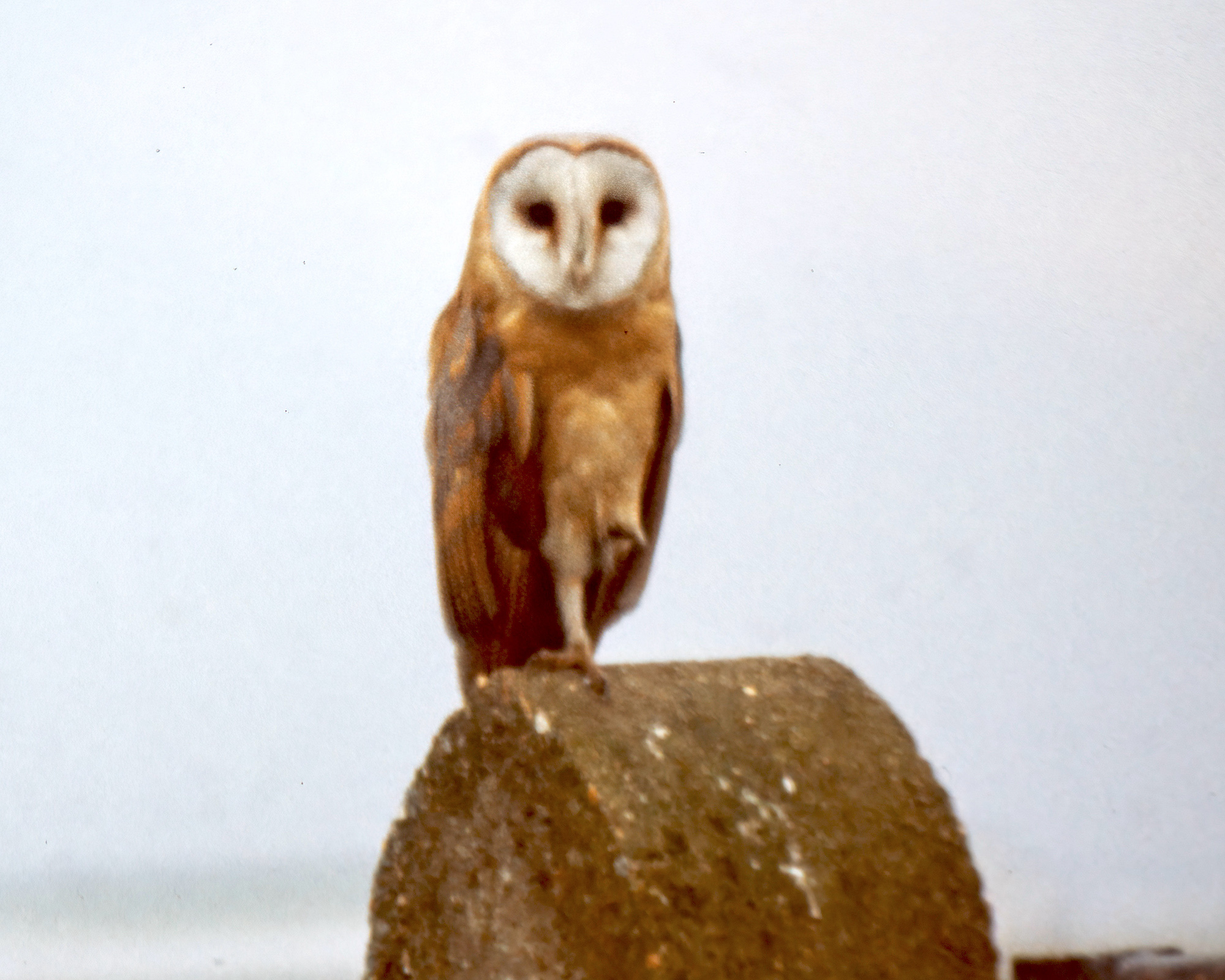Barn Owl Tyto alba
Common and widespread resident with good breeding years coinciding with peaks in the vole population. Dark-breasted Barn Owl T. a. guttata is a vagrant.


The Barn Owl is a characteristic bird of the Lincolnshire farming landscape. The BTO Atlas 2007-11 showed that it was present in virtually every 10km square in the county in both breeding season and winter. The abundance map in the Birds of Lincolnshire (2021) makes it clear that Lincolnshire is one of the most important parts of Britain for this species. The Atlas estimated there were 400-450 pairs in the county in the late 1980s, remarkably consistent with a survey in 1932 that estimated around 410. It's nocturnal habits make it difficult to monitor with BBS type surveys but it's ready adoption of nest boxes for breeding and roosting make it an ideal species for ringers to study. In Lincolnshire there are several ringing groups who have erected around 2,000 nest boxes for Barn Owl across the county. This helps ensure Barn Owls are not limited by lack of breeding sites as old farm buildings and old trees with holes are lost. The Atlas estimated that about 33% of pairs were nesting in tree holes during the 1980s, but it is now thought that about 85% of nests are in nest boxes. Nest box studies show that the numbers of pairs nesting is cyclic following the cycle of vole numbers. Poor spring weather also plays an important role. LBR data between 2014-22 (table below)showed that the number of broods ringed by one ringing team, which monitors 700 boxes, ranged from 49 in 2021 to 394 in 2014, with an average of 254 per year. The current population extrapolated from this is 1,200 pairs or 10% of the British population (Bob Sheppard pers. com.). Clutch size varies enormously too, from one in poor years to 12 in years of rodent abundance!
| Nest box data | 2014 | 2015 | 2016 | 2017 | 2018 | 2019 | 2020 | 2021 | 2022 |
| Total number of nests* | 394 | 77 | 272 | 280 | 185 | 296 | 49 | 230 | 217 |
| Failures | 38 | 20 | 41 | 62 | 31 | 29 | 12 | 18 | 10 |
| Broods ringed | 333 | 44 | 198 | 191 | 131 | 240 | 23 | 173 | 167 |
| Chicks ringed | 1214 | 104 | 522 | 455 | 313 | 722 | 48 | 459 | 428 |
| Average number of chicks / brood | 3.6 | 2.4 | 2.6 | 2.4 | 2.4 | 3.0 | 1.8 | 2.7 | 2.6 |
* Total nests = "missed" and "outcome unknown" as well as ringed + failures.
With thousands of chicks ringed many are recovered, sadly usually through road casualties. Around 97% are recovered within 100 km of their nest site. Interestingly birds ringed in Belgium and one in Netherlands of the nominate race T.a.alba which breeds in Britain and Western Europe have been found in the county in 2009 and 2016 respectively.
Dark-breasted Barn Owl, T. a. guttata
There has been a total of eight recorded occurrences of Dark-breasted Barn Owls (Tyto alba guttata) in Lincolnshire from the first in 1962 to the present day. Of these, two were in autumn (September–October), one in midwinter (January), and four in spring (March–April). All have been found along the coastal strip between Tetney and Anderby Creek, with three of the seven at Donna Nook. Somewhat surprisingly, only one bird was recorded on more than one day – the individual seen at North Cotes from March 1st to 23rd, 1975 (photo above).
Since 1979, when there were two records - possibly of the same individual - at Donna Nook on March 19th and at Tetney on April 12th, there have been two accepted records (table) of this very distinctive race in the county. Is this due to the decline in regular coastal coverage, particularly in the quiet early spring period, which seems to be a key occurrence window? These early spring birds may well be individuals that wintered somewhere in England or Europe and are making the return journey to the continent via the east coast—a regular pattern seen in Short- eared Owls, records of which often peak in the area during March and early April.
| Site | First date | Last date | Count | Notes |
| Tetney | 06/10/1962 | - | 1 | |
| Donna Nook | 20/03/1969 | - | 1 | |
| Anderby Creek | 19/01/1974 | - | 1 | |
| North Cotes | 01/03/1975 | 23/03/1975 | 1 | See photograph, above |
| Dona Nook | 15/09/1976 | - | 1 | |
| Donna Nook | 19/03/1979 | - | 1 | |
| Tetney | 12/04/1979 | - | 1 | |
| Goxhill | 20/11/2009 | - | 1 | Found dead; ringed as a pullus 10/07/2009 at Wommersom, Vlaams (Brabant), Belgium, 483km NW. |
| Bourne South Fen | 07/03/2025 | 1 |
